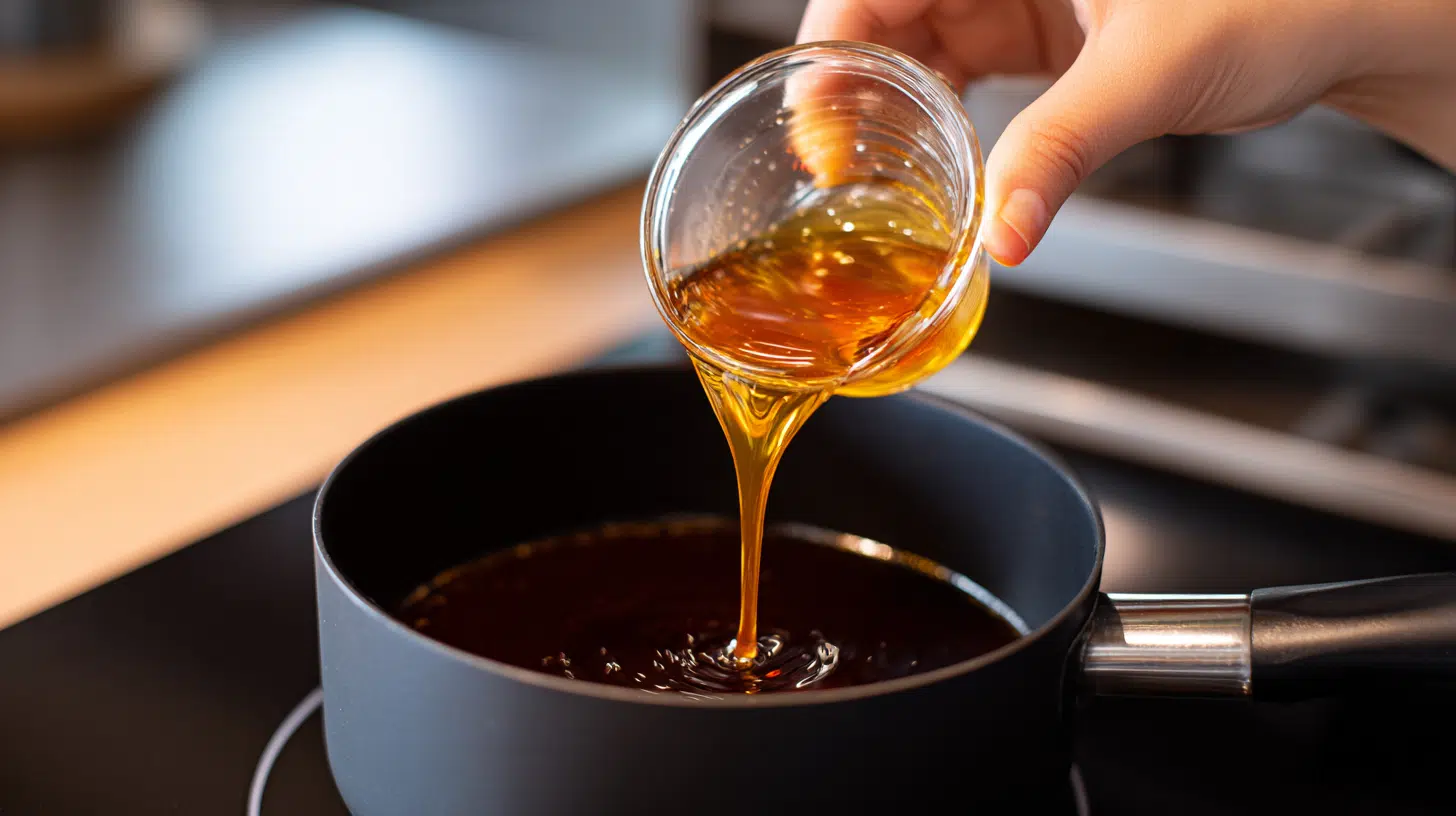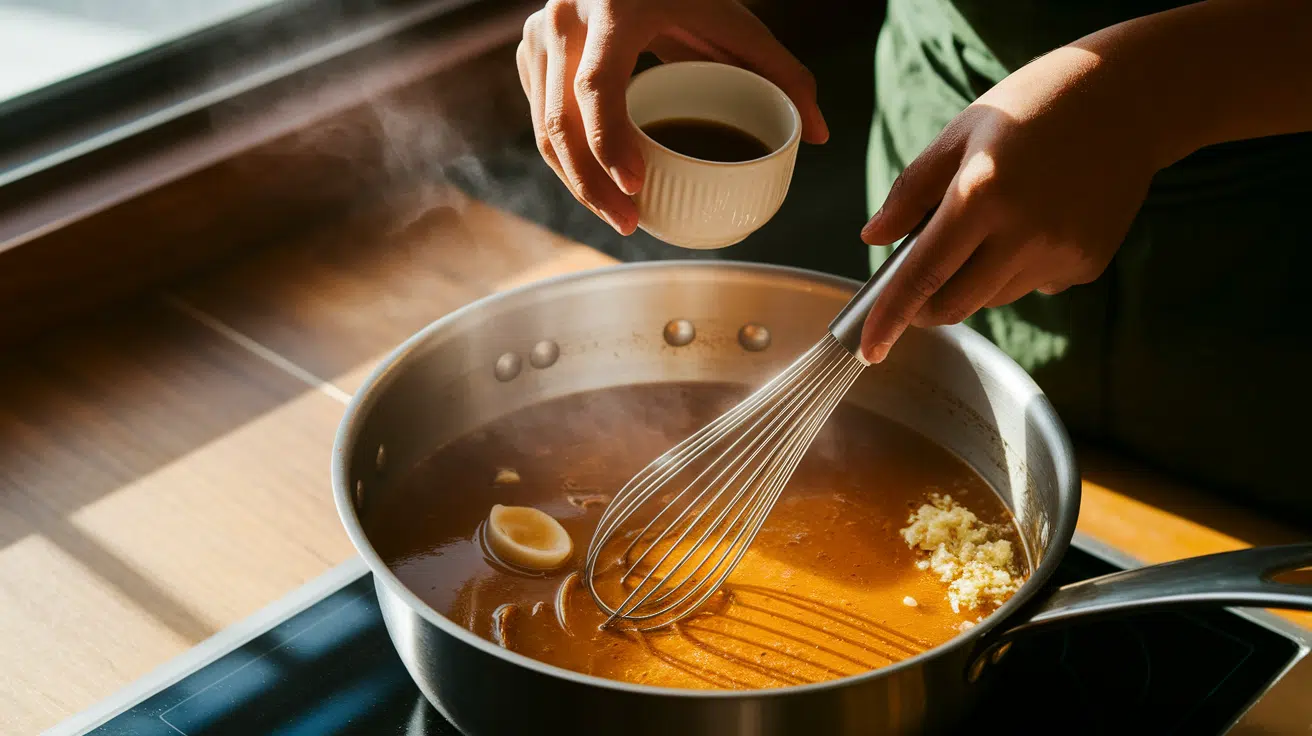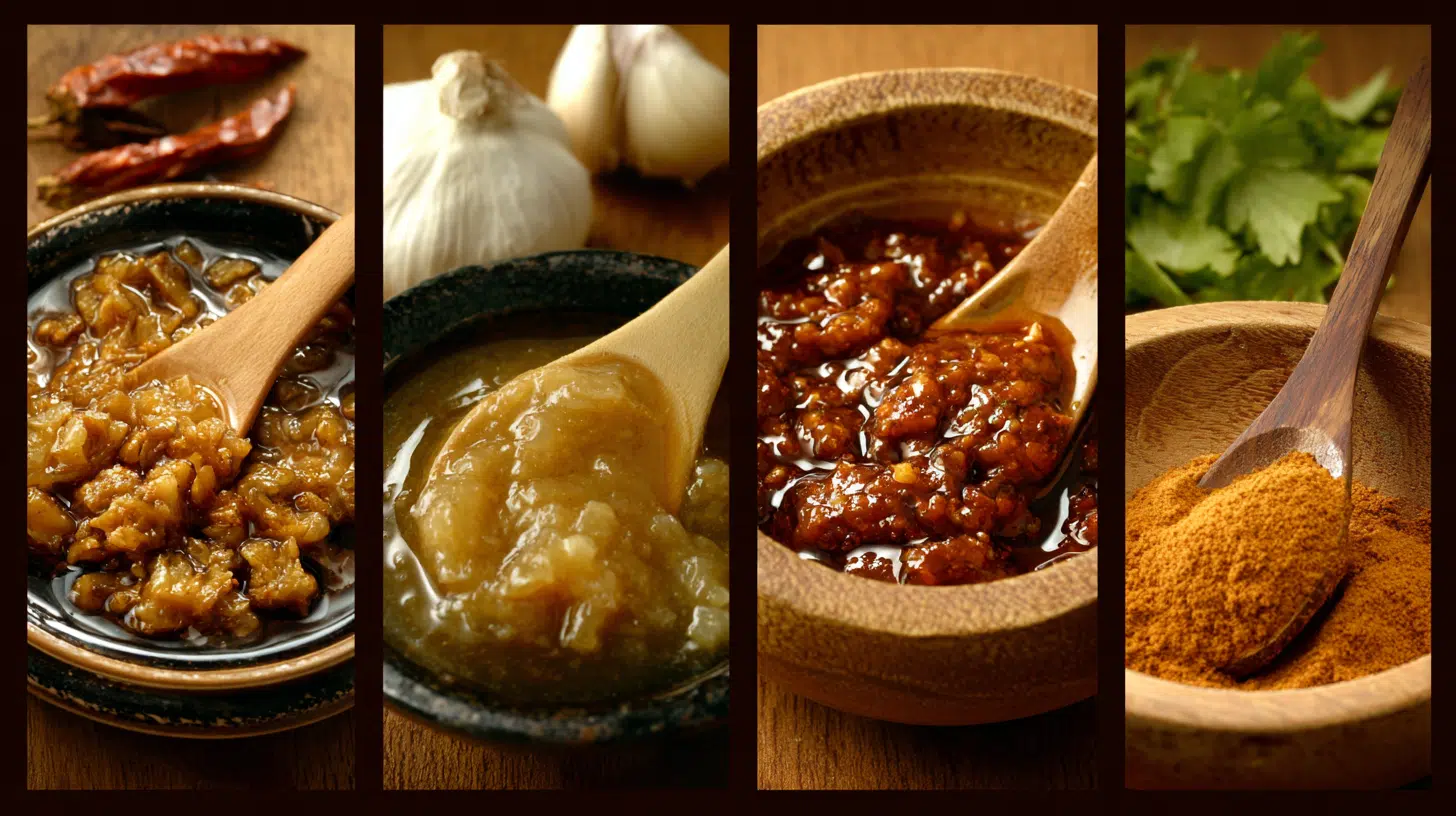When I first started making ramen at home, I kept hearing about something called Ramen tare.
At first, I didn’t pay much attention. But the more I cooked, the more I realized, tare is the master key to great ramen.
Out of all the types of ramen tare, my favorite by far is Miso tare.
A rich miso tare brings that perfect umami punch, adding depth and balance to ramen broth.
Doesn’t matter if you are new to ramen tare or just refining your recipe;
This guide will walk you through how to make miso tare at home with pantry-friendly ingredients that have the deep, savory flavor that turns a simple bowl of ramen into something amazing.
What Exactly is Ramen Tare?
Think of ramen tare as the flavor concentrate of your ramen. You start with a plain broth (chicken, pork, or veggie), and then you add tare to give it its personality.
There are three main types of ramen tare:
- Shoyu Tare: Shoyu tare is made with soy sauce, giving ramen a salty, savory, and slightly tangy flavor. It’s one of the most common trees.
- Shio Tare: Shio tare is a salt-based seasoning that keeps ramen light and clear. It highlights the natural flavor of the broth.
- Miso Tare: Miso tare uses fermented miso paste, creating a rich, deep, and slightly sweet flavor. It’s perfect for hearty ramen bowls.
Each one gives a different flavor. However, Miso tare has to be my favorite because it’s bold and cozy.
It pairs especially well with thicker ramen noodles and heartier toppings like corn, ground pork, and butter.
Essential Ingredients Required for Making Miso Tare
| INGREDIENT | QUANTITY |
|---|---|
| Miso paste | 3 tablespoons |
| Sake | 2 tablespoons |
| Mirin | 2 tablespoons |
| Soy sauce | 1 tablespoon |
| Sesame oil | 1 teaspoon |
| Garlic (minced) | 1 clove |
| Grated ginger | 1 teaspoon |
Step-by-Step Recipe for a Finger-Licking Miso Tare
This is the complete Step-by-Step recipe of the traditional Miso Tare.
1. Combine Sake and Mirin

Start by pouring the measured sake and mirin into a small saucepan.
Turn your stove to low heat and warm the mixture slowly. This step helps to mellow the alcohol and blend the sweetness and depth these liquids bring.
Avoid heating too quickly; you want a gentle simmer only, which will enhance the flavors without evaporating too much liquid.
2. Whisk in the Miso Paste until Smooth and Fully Dissolved

Add the miso paste gradually to the warm sake and mirin, whisking constantly to prevent lumps.
It’s important to fully dissolve the miso into the liquid to create a smooth, even seasoning base for your ramen broth.
Take your time here to incorporate the paste completely, as this step directly impacts the consistency and final flavor balance of your tare.
3. Add Soy Sauce, Sesame Oil, Minced Garlic, and Grated Ginger; Stir to Combine

Once the miso is smoothly blended, pour in the soy sauce for added saltiness and umami complexity.
Follow with sesame oil, which provides a subtle nuttiness and aroma.
Then stir in your fresh minced garlic and grated ginger; these aromatics give your tare a bright, warm lift.
Mix thoroughly to ensure every ingredient is evenly distributed throughout the mixture.
4. Simmer Gently for 2–3 Minutes, Stirring Frequently

Keep the heat low and stir the mixture regularly to prevent settling or sticking on the pan bottom.
The gentle simmer allows the ingredients to marry and the flavors to deepen without damaging the miso’s delicate, fermented notes.
Avoid boiling at all costs, as that can cause bitterness and a loss of the Tare’s natural sweetness and umami richness.
5. Remove from Heat and Let Cool

After simmering, take the pan off the stove and let your miso tare cool to room temperature.
Cooling before storage lets the flavors settle and prevents condensation in the container. Transfer to a clean, airtight jar or container, and refrigerate.
Properly stored, miso tare keeps well for about 7 days, allowing you to prepare it in advance and use it conveniently for multiple ramen servings.
6. Add 1 to 2 Tablespoons of Miso Tare Per Bowl of Broth While Serving

Start by measuring out 1 tablespoon of tare per serving of broth, then taste and add more if desired.
Richer, thicker broths or bigger servings may need closer to 2 tablespoons to balance the flavor.
You can always modify the amount based on your preference or the intensity of your broth.
How to Use Miso Tare in Ramen?
All you need to do is warm up your broth (usually chicken or pork-based), then add 1 to 2 tablespoons of miso tare per bowl. Stir it in, taste, and adjust if needed. Then add noodles and toppings.
Some of my favorite toppings with miso tare ramen are:
- Corn
- Butter
- Soft-boiled egg
- Ground pork
- Green onions
- Bean sprouts
Miso Tare Variations I Love

Here are a few other versions you could try. Each one gives a fun twist to the base recipe.
1. Spicy Miso Tare
This one’s a winner if you are a fan of heat. All you have to do is add 1 tablespoon chili paste or tobanjan to the basic recipe for heat and complexity.
This variation pairs well with rich, creamy pork or miso broths and brings that fiery kick you wanted without even overpowering the savory balance.
Try adjusting the amount of chili paste to match your heat preference; you can add a dash of sesame oil for even more depth.
2. Smoky Garlic Miso Tare
Garlic lovers, this one’s for you. Just replace raw with roasted garlic and substitute smoked soy sauce for regular soy sauce.
This bold variation complements pork-based ramen bowls really well; they add a smoky depth alongside the miso’s earthiness.
Roasting the garlic until golden really mellows its bite, letting the smoky notes shine through for a distinctive ramen experience.
3. Sweet Miso Tare
For a softer, milder flavor, increase the mirin in your base recipe and add a spoonful of sugar or maple syrup to give it a touch of sweetness.
This tare style works beautifully with lighter chicken or vegetable broths, balancing miso’s savoriness.
A bit of grated apple or pear can also be used to naturally sweeten the tare and add a subtle fruitiness, making it ideal for more delicate ramen bowls.
4. Vegan Miso Tare
To make it vegan, I usually omit the bonito flakes (if used) and replace them with mushroom or kombu dashi broth.
Skip animal products entirely for a full-bodied umami flavor using seaweed and mushrooms, perfect for vegetarian or vegan ramen.
Boost flavor further by adding a little white miso or a splash of soy milk to create a richer base while keeping it 100% plant-based.
What Makes Miso Tare So Special?
Miso tare uses miso paste as its base, usually a mix of red and white miso. Red miso is saltier and deeper, while white miso is lighter and a bit sweeter. Together, they balance out beautifully.
You also cook it with garlic, ginger, soy sauce, mirin (a sweet rice wine), and sometimes sesame oil or chili.
The result? A thick, rich flavor base that makes ramen broth taste layered and satisfying.
It’s often used in Sapporo-style miso ramen, a famous type from Hokkaido, Japan.
Miso Paste
Miso paste is a thick, flavorful seasoning made by fermenting soybeans with salt and a type of grain, usually rice or barley.
It has a salty, savory taste and is commonly used in Japanese cooking, especially in soups and sauces. Miso adds rich umami flavor to dishes.
Final Thoughts
Making miso tare at home has honestly changed the way I enjoy ramen. It’s not just about flavor; it’s about discovering what you like and adjusting it to your taste.
A good bowl of ramen begins with a great tare. Miso tare adds deep, savory flavor and gives your broth its unique personality.
You can use it in more than just ramen, too, like stir-fries or marinades. It’s a small kitchen trick, but it adds so much to your kitchen.
If you are into cozy, satisfying meals, this is a great place to start experimenting.







